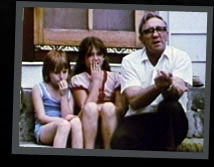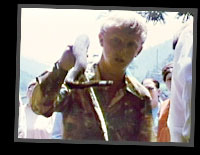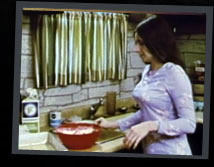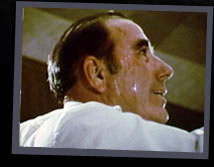
The Jolo Serpent Handlers 1977, 40 mins.I don’t remember how I first heard about serpent handlers but somehow I knew that there were small churches of this nature scattered throughout Appalachia and the South.  I had just graduated from film school when I was asked by a colleague if I wanted to come to the small West Virginia town in MacDowell County where he was teaching and show films to his high school class. He said my visit would go for a week and I could show them whatever I wanted. When I heard that it would be in the mountains of West Virginia I asked if he knew of any serpent-handling churches that I could visit. He did a little research and told me that the grandparents of one of his students were part of a snake-handling congregation in the little town of Jolo, nearby. We could indeed visit and would be welcome. For the 10 days that I was in West Virginia on that initial trip I attended five church services (two on each weekend, and one during the middle of the week). At first I sat way in the back of the church, not wanting to bother anybody. I had brought a little wind-up Bolex with me and I hoped that they might allow me eventually to film a few minutes of footage once they felt comfortable with my presence. At that time my intention was not to make a film about the serpent handlers, but to gather footage that might someday be used in a larger film about trance.  Naturally I was pretty amazed by what I saw; I had grown up in suburban New York, and had not attended many religious services at all, let alone those that handled snakes. At each service there were prayers and a sermon, followed by wonderful singing. Then as the music and singing built, someone (usually Dewey) would go up to the hand-carved wooden box on the altar and bring out a copperhead or rattlesnake that a church member would handle. The handling of the snakes was indeed fascinating, but what I found even more interesting was the people themselves. During every service I had loads of questions, and afterward I always went up and talked to several of the congregants. What does it mean to handle a snake? What does it mean if you are bitten? Can you tell me how you first got into this? Is your entire family part of the church? My questions were endless, their generosity in answering and trying to explain their religion was also boundless.  Because their answers were always so interesting, I realized that it would not be fair – both to the serpent handlers and to the people who saw my footage – to just show the snake handling without context. I realized that the audience would have so many of the same questions that I did and that the answers should be incorporated into the film. That’s when I knew that a larger, more structured documentary was called for. Ironically on my next-to-last night of my first trip to Jolo our car broke down after services and we had to spend the night with different church members. I bunked with Lydia in her trailer and we stayed up all night talking. By morning, the bond was strong, and she became not only a source of religious information, but a friend who I continued to stay with on subsequent trips. Although I found their religious practices fascinating, I was interested in other areas of their lives as well; work in the coal mines, the family dinners every Sunday after church, the tightness of the community, even the way the mountains and hollows looked and affected people’s lives – all aspects that were very different from urban New York.  For this film, there were 3 main trips following that first initial trip to Jolo when I had gone down to teach. During the first trip we filmed the bulk of the material. It was during that trip that Dewey got bitten and my objectivity was sorely tested. We were in the middle of setting up the camera to do an interview with Lydia, Dewey’s niece who lived next door. Someone ran in and said that Dewey had been bitten while attending services at a neighboring church and they were bringing him back to Jolo so that his own church members could pray over him. Like everyone else we rushed up to his house and awaited his return. We were allowed to film him but were prohibited from setting up lights. He arrived about an hour later, weak and swollen. He was in pretty bad shape. The cameraman thought we should call a doctor. I knew we couldn’t interfere that way, but I hoped they would do it. On the second trip I went alone with just my Bolex and filmed the rare outdoor service that took place at the end of August. I stayed with Lydia in her trailer, and during that time we became close enough that I knew what parts of her life should be incorporated into the film. The third piece of filming came several months later. In between all the filming when I was back in New York I kept in close phone contact with Dewey and Lydia, and kept learning more about their lives. After the film was edited I brought it to Jolo. We borrowed a projector from the local library and set up a screen on the altar of the church – that same pulpit where so much of it had been shot. It was odd to see the church members up there in their usual spots, handling snakes on the screen, in two dimensions. Many people felt that the film was like seeing a home movie and asked me to come back to film each year as the children grew into adults.
back to top |